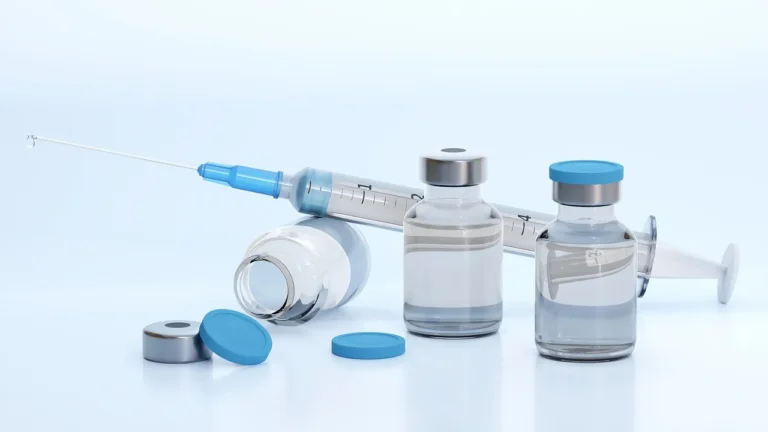
Eli Lilly Reports Strong Q1 2025 Financial Results, Driven by Surging Demand for Mounjaro and Zepbound, While Advancing Pipeline Innovations
Eli Lilly and Company (NYSE: LLY) has delivered a robust start to 2025, reporting a 45% year-over-year increase in revenue for the first quarter, buoyed by soaring demand for its obesity and diabetes therapies. The Indianapolis-based pharmaceutical giant released its financial results for Q1 2025, highlighting not only exceptional commercial performance but also strategic pipeline milestones and expanded manufacturing initiatives.
“Lilly had a solid start to the year, with 45% year-over-year revenue growth driven by strong sales of Mounjaro and Zepbound,” stated David A. Ricks, Lilly’s Chair and Chief Executive Officer. “Our pipeline continued to deliver across key therapeutic areas, with product approvals in oncology and immunology, and the exciting success of our oral incretin, orforglipron, in the first of seven late-stage studies in diabetes and obesity. To support global demand for our newest medicines, we’re accelerating our manufacturing investments, as underscored by our recent announcement to build four new facilities.”
This performance signals strong momentum for Lilly as it continues to capitalize on the global demand for metabolic disease treatments and execute on a diversified late-stage pipeline.
Q1 2025 Financial Performance: Double-Digit Growth Across Key Metrics
Lilly’s total worldwide revenue reached $12.73 billion in the first quarter of 2025, representing a 45% increase compared to the same period in 2024. This performance was primarily driven by a significant 53% rise in product volume, partially offset by a 6% decline in realized prices and a 2% headwind from foreign exchange rates. The company’s core commercial portfolio continues to expand, with flagship products such as Mounjaro and Zepbound taking center stage.
Key Products revenue soared by $4.09 billion year-over-year, totaling $7.52 billion in Q1 2025. This growth was predominantly led by Mounjaro, the company’s GLP-1 receptor agonist approved for type 2 diabetes, and Zepbound, a newer entrant targeting chronic weight management.
Geographic Breakdown: U.S. and International Markets Both Show Strength
In the U.S. market, revenue climbed to $8.49 billion, marking a 49% increase over the previous year’s first quarter. This surge was propelled by a 57% growth in volume, largely attributable to the overwhelming success of Zepbound and Mounjaro. However, the gains were tempered slightly by a 7% drop in average realized prices, likely reflecting changes in payer mix, discounts, and rebates.
Revenue outside the U.S. grew by 38%, totaling $4.24 billion. Volume increased by 46%, with Mounjaro serving as the primary growth engine across international territories. A notable contributor to international revenue was Jardiance, which benefited from a one-time $370 million gain tied to an amended commercialization agreement with Boehringer Ingelheim. The companies adjusted their commercialization responsibilities across select markets to streamline operations and enhance product accessibility.
Operational Efficiency: Improved Margins and Strategic Investment
Gross margin for the first quarter was $10.50 billion, up 48% from Q1 2024. As a percentage of revenue, gross margin rose to 82.5%, a 1.6 percentage point increase. This margin improvement was attributed to lower production costs, favorable product mix shifts, and increased sales of high-margin medicines, though partially counterbalanced by declining realized prices.
On a non-GAAP basis, gross margin improved to $10.63 billion, or 83.5% of revenue, reflecting consistent operational execution and product portfolio optimization.
Research and development (R&D) expenses reached $2.73 billion, an 8% increase year-over-year. R&D represented 21.5% of total revenue, demonstrating Lilly’s continued commitment to funding innovation across both early-stage discovery and late-stage clinical development programs.
Marketing, selling, and administrative expenses totaled $2.47 billion, an increase of 26%, largely due to promotional investments supporting existing brands and preparing for upcoming product launches. These strategic expenditures align with Lilly’s broader vision to expand market penetration and maximize lifecycle value for its therapeutic assets.
Strategic Acquisitions and Pipeline Expansion: IPR&D Charges Reflect Continued Investment
One of the notable financial impacts in Q1 2025 was a substantial increase in acquired in-process R&D (IPR&D) charges, which totaled $1.57 billion compared to $110.5 million in the year-ago quarter. The majority of these charges were tied to Lilly’s acquisition of Scorpion Therapeutics’ PI3Kα inhibitor program, known as STX-478. This investigational oncology asset reinforces Lilly’s commitment to expanding its cancer treatment portfolio and reflects the company’s willingness to invest aggressively in high-potential assets.
Net Income, Earnings Per Share, and Tax Considerations
Reported net income for Q1 2025 was $2.76 billion, translating to earnings per share (EPS) of $3.06. This compares to Q1 2024 figures of $2.24 billion in net income and EPS of $2.48. It’s worth noting that both periods were impacted by IPR&D charges, which amounted to $1.72 per share in Q1 2025, up significantly from $0.10 per share a year earlier.
Lilly’s effective tax rate rose to 20.2% in Q1 2025, up from 11.6% in Q1 2024. The year-over-year increase was primarily driven by the non-deductible nature of certain IPR&D charges, which affected taxable income. Both periods also reflected the impact of discrete tax benefits.
On a non-GAAP basis, Lilly reported net income of $3.00 billion and EPS of $3.34, compared to $2.34 billion and $2.58, respectively, in Q1 2024. The non-GAAP figures provide a clearer view of underlying performance by excluding one-time and acquisition-related charges.
Pipeline Highlights: Momentum Across Metabolic, Oncology, and Immunology
In addition to its commercial achievements, Lilly underscored progress within its development pipeline. The company celebrated clinical milestones across multiple therapeutic areas, most notably with orforglipron, an investigational oral GLP-1 receptor agonist. In the first of seven planned late-stage studies in obesity and diabetes, orforglipron demonstrated positive results, setting the stage for a potential new oral treatment option in metabolic disease.
Furthermore, Lilly received product approvals in oncology and immunology, though specific compounds were not disclosed in the quarterly update. The company’s growing oncology footprint, including the newly acquired STX-478, highlights a strategic emphasis on targeted therapies with strong molecular rationale.
Manufacturing Expansion to Support Global Demand
Recognizing the immense and growing global demand for its newer therapies, Lilly is investing heavily in its manufacturing infrastructure. The company recently announced plans to construct four new production facilities, aimed at bolstering supply capabilities for its injectable and oral medicines. This aggressive expansion strategy is intended to prevent future supply constraints and ensure timely delivery of its products to patients worldwide
Eli Lilly’s performance in the first quarter of 2025 paints a picture of a company hitting its stride across both commercial and R&D fronts. The firm continues to capitalize on its leadership in metabolic disorders, while reinvesting in innovation to diversify its pipeline. Strong financials, solid product momentum, and increased manufacturing investments all point to a confident and forward-looking trajectory for the remainder of 2025 and beyond.
As healthcare systems globally face rising demand for chronic disease management solutions, Lilly appears well-positioned to meet those needs with both existing and emerging therapies.





